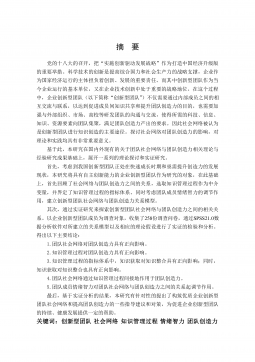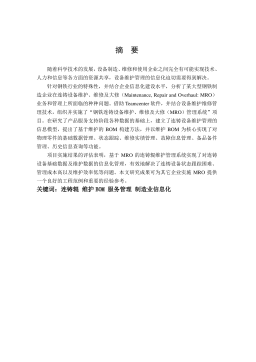基于经济周期的项目投融资非预期风险评价及策略研究
摘要在当今之社会,一切都是项目,一切也将成为项目1。项目管理是当今急剧变化时代求得生存的关键。项目的投融资策略是项目管理的重要的核心内容。始于20世纪90年代的项目风险管理是现代项目管理的一个非常重要的课题。由于项目的一次性和独特性使得项目的风险远远大于一般日常运营中的风险,因此要想保障项目的成功就必须开展项目的风险管理。特别对于那些投资周期长、投入金额大、易受外界因素影响、灵活性又差的项目,尤其是关系到国计民生的投资项目,其投资过程涉及到社会、民生、经济、金融、技术等各个方面,在发展过程中会受到诸多不确定因素的影响。特别是在影响经济周期的因素下所引发的非预期风险相对于可预期风险来说,影响投融...
相关推荐
-
USST_Arts_112480743自动生产线的同步维修模型及案例分析VIP免费

 2025-01-09 14
2025-01-09 14 -
USST_Arts_112480745基于供需网特征理念的企业间关系状态研究VIP免费

 2025-01-09 14
2025-01-09 14 -
USST_Arts_112480756 我国城镇化与能源消费结构间关系的研VIP免费

 2025-01-09 20
2025-01-09 20 -
USST_Arts_112490763 企业创新型团队社会网络、知识管理过程及团队创造力关系研究VIP免费

 2025-01-09 13
2025-01-09 13 -
USST_Arts_112490769创新团队执行力影响因素分析VIP免费

 2025-01-09 15
2025-01-09 15 -
USST_Arts_112070649基于团队自反性的科技型企业TMT特征对企业绩效的影响研究VIP免费

 2025-01-09 19
2025-01-09 19 -
TR公司工业机器人市场发展战略研究VIP免费

 2025-01-09 23
2025-01-09 23 -
二氧化碳套管式气冷器的研究VIP免费

 2025-01-09 16
2025-01-09 16 -
非共沸混合物在微通道水平单管内流动沸腾特性VIP免费

 2025-01-09 69
2025-01-09 69 -
基于MRO的连铸辊维护管理系统研究VIP免费

 2025-01-09 11
2025-01-09 11
相关内容
-

USST_Arts_112070649基于团队自反性的科技型企业TMT特征对企业绩效的影响研究
分类:高等教育资料
时间:2025-01-09
标签:无
格式:PDF
价格:15 积分
-

TR公司工业机器人市场发展战略研究
分类:高等教育资料
时间:2025-01-09
标签:无
格式:PDF
价格:15 积分
-

二氧化碳套管式气冷器的研究
分类:高等教育资料
时间:2025-01-09
标签:无
格式:PDF
价格:15 积分
-

非共沸混合物在微通道水平单管内流动沸腾特性
分类:高等教育资料
时间:2025-01-09
标签:无
格式:PDF
价格:15 积分
-

基于MRO的连铸辊维护管理系统研究
分类:高等教育资料
时间:2025-01-09
标签:无
格式:PDF
价格:15 积分






